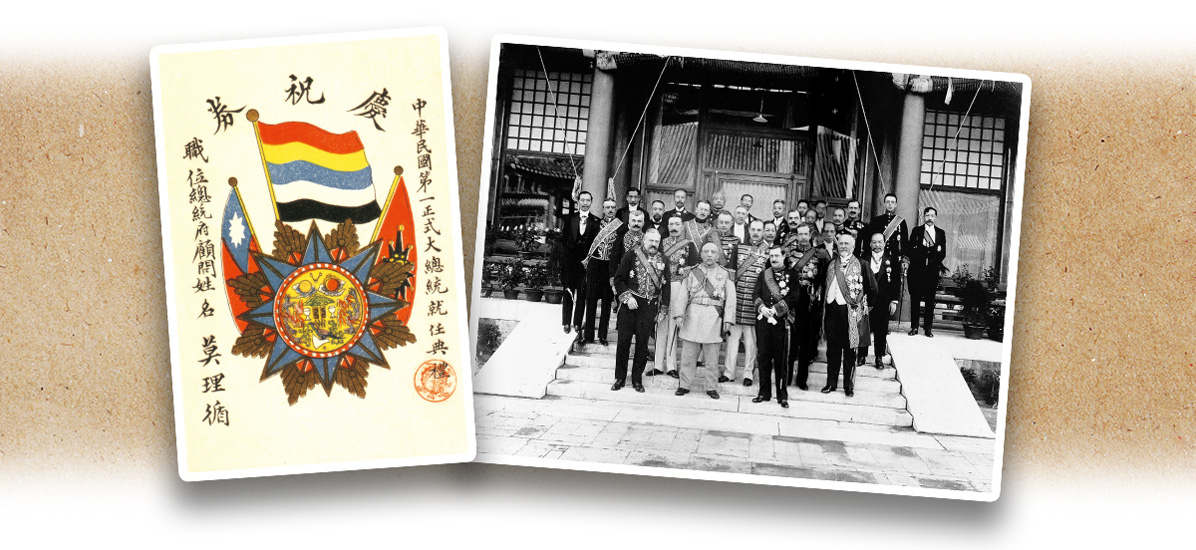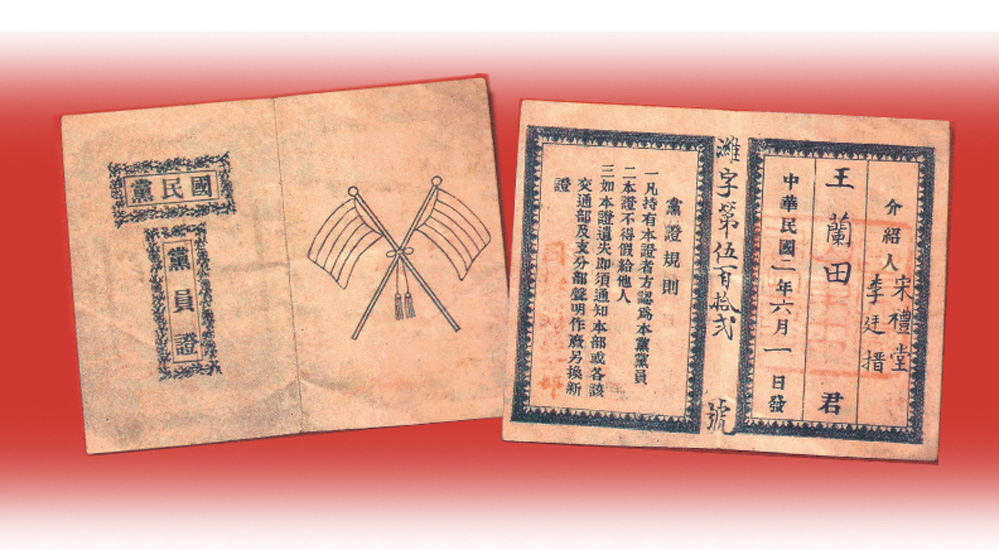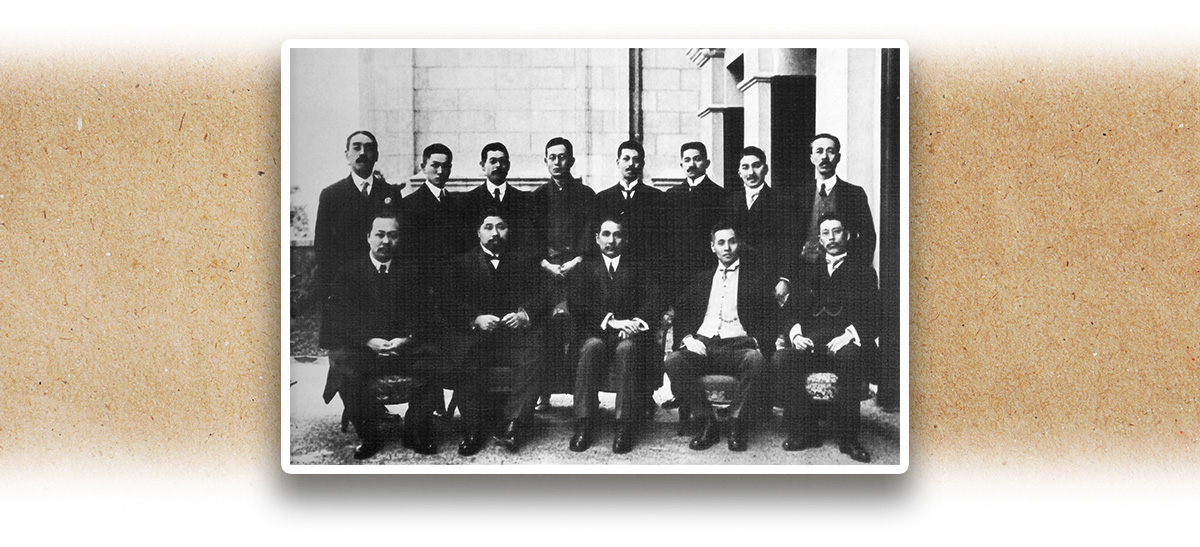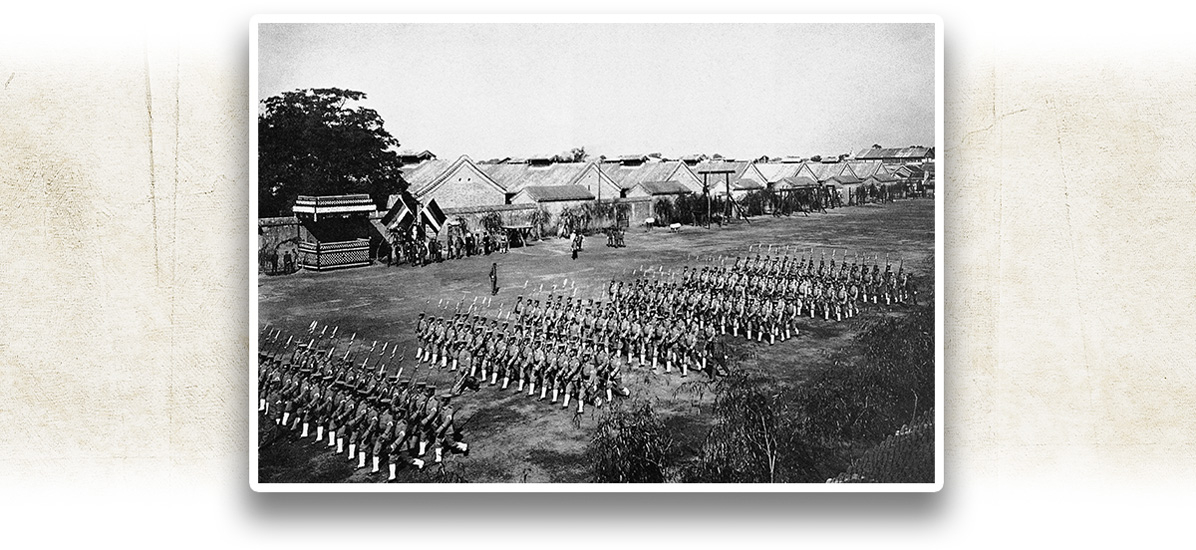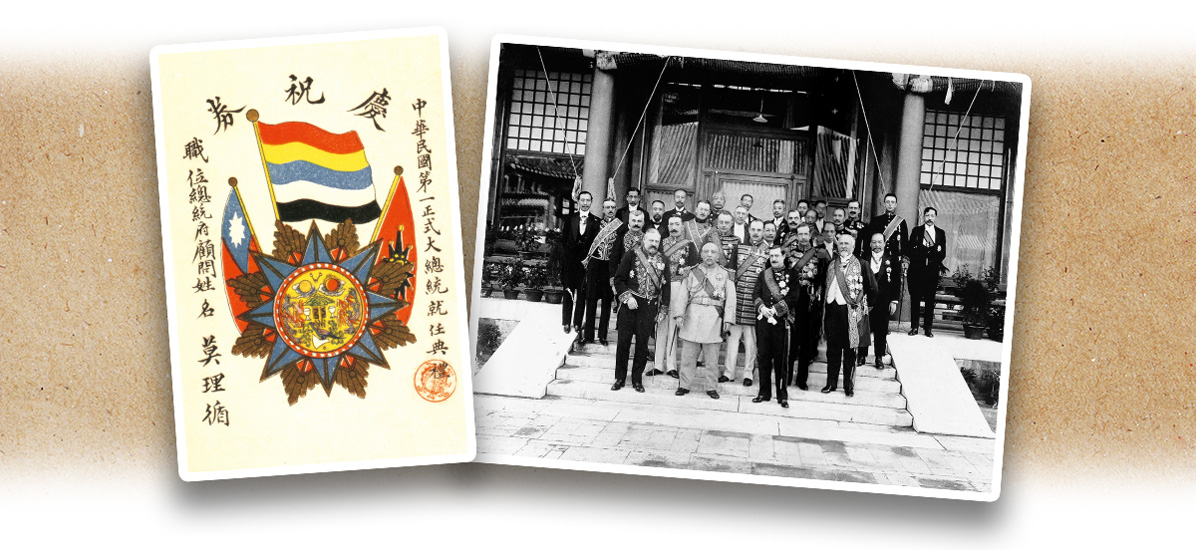On 10 March 1912, Yuan Shikai (袁世凱) was inaugurated as the Provisional President of the Republic of China in Beijing. The next day, Sun Yat-sen (孫中山) and his associates announced the Provisional Constitution of the Republic of China (《中華民國臨時約法》) to restrict the president’s power with a responsible cabinet system. August that year saw Song Jiaoren (宋教仁) reorganise the United League (同盟會) into a formal political party named the Kuomintang (the Nationalist Party, 國民黨), which went on to win a majority of seats in the National Assembly election in December. Regrettably, Song was assassinated at the Shanghai Railway Station in March 1913 that shocked the whole country.
Meanwhile, without the National Assembly’s consent, Yuan borrowed a huge loan from the banks of Britain, France, Germany, Japan, and Russia, and ordered the dismissal of the Kuomintang members Li Liejun (李烈鈞), Hu Hanmin (胡漢民), and Bai Wenwei (柏文蔚) from their posts as the governors of the provinces of Jiangxi (江西), Guangdong (廣東), and Anhui (安徽) respectively. In July 1913, Li took the lead of a military campaign against Yuan. Regions including Nanjing (南京), Shanghai (上海), and the provinces of Anhui, Guangdong, Fujian (福建), Hunan (湖南), and Sichuan (四川) followed suit to declare independence. It became known as the “Second Revolution” (二次革命).
Nevertheless, Yuan’s mighty Beiyang Army crushed the Second Revolution in just two months. Redoubling his efforts to assume autocratic rule, Yuan then stepped up its dictatorship by changing himself from the provisional to the official president and ordering the Kuomintang’s dissolution. Meanwhile, Sun continued to rally opposition against Yuan in Japan, and founded a new organisation named the Chinese Revolutionary Party (中華革命黨) in Tokyo in July 1914.
|
|
What was the “Second Revolution”? How did the Kuomintang founded in August 1912 relate to the Kuomintang of China founded in October 1919? |
|
|
See answer below. |
On the left: Song Jiaoren; on the right: a group photo of Huang Xing (黃興) (first figure from the left in the front row), Song Jiaoren (second figure from the right in the front row), and other members of the China Revival Society (華興會) taken in the late Qing dynasty. Song was a core member of the anti-Qing China Revival Society and its successor, the United League. He was a highly respected figure among the revolutionaries, and had a deep understanding of Western parliamentary politics.
The Kuomintang party membership certificate of Wang Lantian (王蘭田) dated 1913. In August 1912, Song Jiaoren spearheaded to restructure the United League into the Kuomintang so that it could participate in the National Assembly election in December that year. The new party won a majority of seats, allowing it to play a dominant role in selecting the Cabinet with Song as the premier. These steps would enable the cabinet and the National Assembly to restrict Yuan Shikai’s presidential powers and promote the democratic development in China.
On 20 March 1913, Song Jiaoren was assassinated at the Shanghai Railway Station. On the left: Song’s body was placed temporarily on a chair after the assassination; on the right: the modern-day site of Song’s grave.
The assassination shocked the whole nation. Yuan Shikai was accused of involvement and it turned the revolutionaries against him. Pictured is a group photo of Sun Yat-sen (third figure from the left in the front row), Huang Xing (second figure from the left in the front row), and other party members taken during a meeting to discuss issues including Song Jiaoren’s assassination, the launch of the Second Revolution, and fundraising in the evening of 25 March 1913.
At that time, it was widely believed that Yuan Shikai ordered Song Jiaoren’s assassination. Despite Yuan’s denial, the trail of evidence suggested that the assassination was ordered by Zhao Bingjun (趙秉鈞), the provisional premier and Yuan’s long-time supporter. However, Wu Shiying (武士英), the assassin, was found to be a member of the Progressive Association (共進社), an organisation in the Kuomintang camp. To this day, Song’s case remains a historical mystery. In any case, this incident led to the complete break between the revolutionaries and Yuan.
On the left: The Chinese Government Reorganisation Loan Agreement (《中國政府善後借款合同》) dated 26 April 1913; on the right: a modern-day photo of the Hongkong and Shanghai Bank building established in 1913 in Hankou (漢口). The bank was one of the lenders of Yuan’s foreign loan. Yuan suffered heavy criticism borrowing, adding fuel to the situation after the Song Jiaoren's case.
To address China’s fiscal challenges, Yuan Shikai secured a reorganisation loan from a consortium formed by the British-owned Hongkong and Shanghai Bank, the French-owned Banque de l'Indochine, the German-owned Deutsch-Asiatische Bank, the Russian-owned Russo-Asiatic Bank, and the Japanese-owned Yokohama Specie Bank. The 25-million-pound loan was to be repaid at an annual interest rate of five per cent in 47 years, with the salt tax and customs revenue as collateral. It would also place the management of salt tax under foreign control. Yuan was criticised as he did not get the senate’s consent before borrowing the reorganisation loan. Public opinion had it that he made huge foreign loan and betrayed China’s national interests to consolidate his own power.
From left to right: Li Liejun, Hu Hanmin, and Bai Wenwei were governors of the provinces of Jiangxi, Guangdong, and Anhui respectively. These three Kuomintang members were dismissed from their posts by Yuan Shikai successively in June 1913. Increasingly pressured by Yuan, the revolutionaries had no choice but to go against him. On 12 July, Li took the lead to mount a military campaign in Jiangxi. It thus commenced the Second Revolution in which regions including Nanjing, Shanghai, Anhui, Guangdong, Fujian, Hunan, and Sichuan followed suit to turn against Yuan and declare independence.
Yuan Shikai’s Beiyang Army conducting a military drill in the early Republican era. The regional anti-Yuan armed forces were no match for the mighty Beiyang Army.
On 1 September 1913, the Beiyang general Zhang Xun (張勳) captured Nanjing, the revolutionaries’ military headquarters. Provinces thus cancelled their independence. The left and right photos show Nanjing’s Taiping Gate (太平門) and Chaoyang Gate (朝陽門) respectively, both were destroyed by Zhang’s bombarding. On 12 September, the Yunnan (雲南) army supporting Yuan Shikai conquered Chongqing (重慶), Sichuan, ending the barely two-month-long Second Revolution.
After suppressing the Second Revolution, Yuan Shikai intensified his efforts to consolidate and expand power. On 10 October 1913, he officially assumed the post of President of the Republic of China. On the left: an invitation card addressed to George Ernest Morrison, the presidential palace adviser, to attend Yuan’s inauguration as the “first official President of the Republic of China” on 10 October 1913. On the right: a group photo of Yuan and foreign envoys taken on his inauguration day.
After the Second Revolution, Sun Yat-sen, Huang Xing, and many revolutionary leaders were wanted and had to flee overseas. The Kuomintang was dissolved as well. On 8 July 1914, Sun formed the Chinese Revolutionary Party (中華革命黨) in Japan. As its chairman, he continued to rally opposition against Yuan Shikai. On the left: the oath written by Sun when he joined the Chinese Revolutionary Party; on the right: Sun’s Chinese Revolutionary Party membership certificate.
|
|
What was the “Second Revolution”? How did the Kuomintang founded in August 1912 relate to the Kuomintang of China founded in October 1919? |
|
|
The “Second Revolution” refers to the Kuomintang-led revolutionary war against Yuan Shikai’s autocratic rule. It took place between July and August of 1913, and is commonly called the Second Revolution for being the revolutionaries’ second attempt of revolution after the 1911 Xinhai Revolution (辛亥革命). Other names included the “Punitive War against Yuan Shikai,” “Guichou War (癸丑之役)” or “Gong-Ning War (贛寧之役)”. The latter two so named for the Chinese lunar year of Guichou (1913) and the major battlegrounds (Gong-Ning being the abbreviation for Jiangxi Province﹝江西﹞and Nanjing ﹝南京﹞) respectively. The Kuomintang founded in August 1912 was mainly restructured by Song Jiaoren based on the United League and did not contain the words “of China” in its title. It was dissolved by Yuan in November 1913. Later in July 1914, Sun Yat-sen founded the Chinese Revolutionary Party. In October 1919, he reorganised it into the “Kuomintang of China”, with the words “of China” differentiating it from the original Kuomintang. To summarise, the revolutionary groups Sun and his associates had a hand in founding were, in chronological order, the Revive China Society (興中會, in 1894), the United League (in 1905), the Kuomintang (in 1912), the Chinese Revolutionary Party (in 1914), and the Kuomintang of China (in 1919). |
Sources of most photos used in this feature piece: Fotoe and misc. photo sources.




